Did you know that a swimming pool pump…
- Accounts for 25% of your household’s energy bill
- Is the largest electricity consumer in your home
- Uses three times the energy of a refrigerator
- On average costs $427 per year to operate
Recently my wife and I built a swimming pool in our backyard and from a professional standpoint this was such a great learning experience. Building our pool allowed me to test out many of the pool products that I have recommended over the years. During this process I found there were products that I absolutely loved, but at the same time there were a few products that I have recommended on a daily basis that I would not recommend in the future again.
One of my favorite items connected to my pool is my Jandy variable speed pump. It is so quiet, gives me great flexibility with my water features and most important it is extremely energy efficient. During the time period that I was building our pool, I also started to participate quite a bit in a few online swimming pool forums and whenever the topic of pumps would arise I would be eager to suggest a variable speed pump. As I commented on this topic I noticed that there were a few who felt that variable speed pumps were not the best choice and in many cases would suggest a dual speed pump. So, I decided that I would dig a little deeper into this topic and I have shared my findings in this blog post.

The three types of pool pumps explained
First, let’s start with a basic overview of each of the three types of pool pumps on the market today.
Single Speed Pool Pumps (Cost $250-$500)
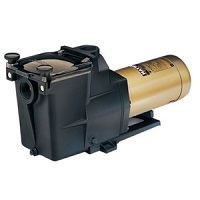
- Highest operational costs
- Least expensive upfront costs
- Operate at a single speed of 3450 revolutions per minute (RPM)
- Operate at a single horsepower ranging from ¾ HP to 3 HP
- Account for 75% of the pool pumps in the USA
Dual Speed Pool Pumps (Cost $500-$700)
- Lower operational cost that contributes to significant operational cost savings
- More expensive than Single Speed Pumps
- Operate at two speeds – 3450 RPM and 1725 RPM
- Operate at two different HPs
- Quiet at low speed
- Difficult to fine tune flow rates
- Additional controller or timer may be needed
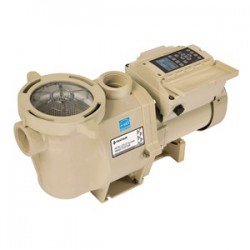
Variable Speed Pool Pumps (Cost $650-$1,200)
- Least expensive pump to operate
- Most expensive upfront costs
- Operate at full range of speeds from 600 RPM – 3450 RPM
- Operate at full range of HPs
- Easy to fine tune flow rates
- Extremely quiet
So why the debate?
The main point of the debate is if you should pay the extra upfront dollars for a pump to reap the rewards of lower operational costs in the future and subsequently how much more should you spend. Should you spend a little bit more on a dual speed pump for pretty good energy savings or should you pay more for a variable speed pump for even greater energy savings and the ability to fine-tune your flow rates?

Why do dual speed and variable speed pumps cost less to operate?
Typically single-speed pumps are too big for your pool. Dual speed and variable speed pumps address this wasted energy as they can operate at different speeds. Running your pump at lower speeds for longer periods of time will cost you much less in operational costs than running your pump at a high speed for shorter periods of time. The energy savings that are gained by replacing a single speed pump with either a dual speed or variable speed pump are based on an engineering principle known as the Pump Affinity Law. Without taking you back to high school algebra class, this principle states that the energy savings are disproportionately larger as you lower the speed of your pump. For example, if you reduce the RPMs of your pump by 50% you don’t get a 50% energy savings you actually get a 75% energy savings and lowering your RPM by 66% gives you an 89% energy savings.
For example if you reduce the RPMs of your pump by 50% you don’t get a 50% energy savings you actually get a 75% energy savings and lowering your RPM by 66% gives you an 89% energy savings.
Is your electricity expensive?
Electricity costs vary widely from state to state and this plays a big factor in determining which pump to choose. You pay for your electricity by the kilowatt-hour (kWh) and the pricing you pay per kilowatt-hour varies greatly from state to state. Dual speed and variable speed pumps use far less kWh than traditional single speed pumps with variable speed pumps using the lowest amount of kWh. If you do not know how much you pay for electricity then this website, The Cost of Electricity for All 50 States, shows you how much you pay. Below I have listed a few of the more popular states and if they fall into the expensive electricity, average electricity or inexpensive electricity categories. Currently, at the time of writing this blog post, the national average in the United States is 12.29 kWh.

Expensive electricity (.30 – .17 kWh) – Traditionally the most expensive areas in the United States for electricity are California, Hawaii, Alaska (a huge pool state), New York and the Northeast.
Average electricity (.11 – .16 kWh) – Florida, Michigan, Ohio, Arizona, and Texas.
Inexpensive electricity (.08 – .10 kWh) – Tennessee, Oklahoma, Louisiana, Kentucky, Mississippi, and West Virginia.
Do you run your pump all year round?
If you live in a warm climate then you will see the potential for greater energy savings than those in cooler climates. This occurs because pool owners in warm climates run their pumps 365 days per year and those in cooler climates shut down their pool pumps for a good percentage of the year. On average pool owners in cooler climates run their pumps 122 days per year. If you run your pool pump 365 days per year in a warm climate then this would be equivalent to three pool seasons in a cooler climate!
Let’s look at the #s
The proof is in the #s so let’s dig into the #s a little deeper. Below I am going to run through a few examples showing the operational costs for a single speed, dual speed, and variable speed pump. Hopefully, this will illustrate how much of an impact electricity cost and climate come into play when determining your pump.
If we take the average size pool of 22,000 gallons and use the guidelines of turning your pool over once per day we come up with the following #s.
Warm Climates
| Pump Type | Energy Use Per Year | Cost to Operate | Savings Per Year | Average Pay Back Time |
|---|---|---|---|---|
| Single Speed Pump | 4714 kWh | $613 | ||
| Dual Speed Pump | 2521 kWh | $327 | $373 | 6 Months |
| Variable Speed Pump | 948 kWh | $123 | $640 | 15 Months |
Note: Example above is using National Avg. for electricity of 12.29 kWh if you live in a state with expensive electricity like California then your savings will be far greater. Calculate exactly how much your pool pump will cost to operate in your state.
Cool Climates
| Pump Type | Energy Use Per Year | Cost to Operate | Savings Per Year | Average Pay Back Time |
|---|---|---|---|---|
| Single Speed Pump | 2723 kWh | $354 | ||
| Dual Speed Pump | 843 kWh | $109 | $244 | 12 Months |
| Variable Speed Pump | 317 kWh | $41 | $312 | 24 Months |
Note: Example above is using National Avg. for electricity of 12.29 kWh if you live in a state with expensive electricity like New York then your savings will be far greater. Calculate exactly how much your pool pump will cost to operate in your state.
Pump payback time
The two biggest factors that determine how fast a dual speed or variable speed pump will pay itself back are:
- Climate
- Cost of energy
In warm climates, you will run your pump 365 days a year meaning you have more opportunity for energy savings. In areas where energy is expensive, the payback will also be quicker.
Just tell me what to get
If your pocketbook can take the additional upfront cost of a dual speed or variable speed pump then I would always suggest one of these pumps as the payback on average takes six months on a dual speed pump and 15 months on a variable speed pump.
In general, my suggestion would be based on if you live in a warm climate or cool climate and secondly if you have expensive energy costs or cheap energy costs.
Warm climate & expensive energy – Variable speed pump
Warm climate & cheap energy – Dual speed pump
Cool climate & expensive energy – Variable speed pump
Cool climate & cheap energy – Dual speed pump

Other Considerations
There are quite a few other considerations apart from the cost of operation that you will want to consider to help you determine if a dual speed or variable speed pump is right for you. Below is a list of these considerations.
Power company rebates
Power companies are offering rebates as high as $400 for switching over to a variable speed pump. In many cases, the power company rebate can make a variable speed pump cost less than a dual speed pump. Make sure to check if your power company offers a Variable Speed Pump Rebate. If so, then it may be a no brainer to opt for a variable speed pump.
Ability to control flow
If you have a lot of bells and whistles connected to your pool like waterfalls, a spa, water features, etc. then I would suggest a variable speed pump as it will allow you to control your water flow for each feature.
Pipe size
Keep in mind your pipe size when selecting your pump as the diameter of your pipe will affect which HP pump you can use. Smaller pipe sizes may not be able to handle large HP pumps. Here is a guide showing the GPM ratings for the most common pool pipe sizes.
| Pipe Size | Flow Rating (GPM) |
|---|---|
| 1-1/12" | 60 GPM |
| 2" | 100 GPM |
| 2-1/2" | 140 GPM |
| 3" | 225 GPM |
This means that if you went with a 3 HP variable speed pump that can output 150 GPM and you only have 1-½” pipe which has a max flow rating of 60 GPMs then the majority of the higher speeds of the pump will go unused as the plumbing is unable to handle this high flow of water.
Additional controller or timer
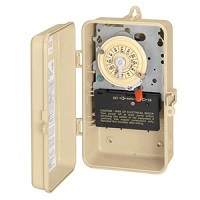
A consideration when looking at dual speed pumps is that in most cases you will need to purchase a separate dual speed timer. The price of this timer ranges between $140-$200 based on your current set up. If your pump is turned on and off by a standard yellow dial timer then you would go the $140 route which is a second timer which controls the switching between high and low speeds where your original timer would be for turning the power on and off to the pump. If you don’t have a timer for your pool or your project is the construction of a new pool then you would need a two clock timer which is the $200 timer. In most cases, for pools with automated control systems, an additional timer is not needed. There are a few systems like the Jandy Aqualink which require a special dual speed relay.
Motor replacement or pump replacement
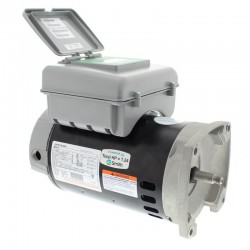
Often there is no need to replace your entire pump and you can save a considerable amount of money by just upgrading your motor to a variable or dual speed motor. So should you replace your entire pump or just your motor? A few questions to ask are:
- How old is your pump?
- Are there visible signs of damage to your pump housing?
- Are parts available for your pump?
In the case of the dual speed pump and motors, it often makes sense to upgrade your motor to a dual speed motor. The reason being is there is a great new motor on the market that has a digital timer mounted directly on the motor meaning that you don’t need to purchase the separate $100-$200 timers indicated above. For some reason unknown to me this digital timer option is only available on replacement motors and not an option on new pumps. Hayward, Pentair, and Zodiac, if you’re listening to this is your next big product and I will only ask for 20% of the revenue…
Pool size (High Stakes Poker)
Typically the larger the pool size the larger the pump which means the operational cost is going to be higher than a smaller pump. So with larger operational costs comes larger operational savings tipping the scales in favor of a variable speed pump on large pools.
Water Features
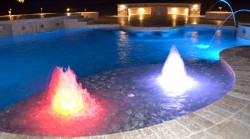
As mentioned earlier one of the key benefits to a variable speed pump apart from operational savings is the ability to control the flow of the pump. This feature comes in very handy if you have water features connected to your pool.
Do you like gadgets?
Many of us like the latest and greatest items on the market. I typically fall into this category. If you wait hours in line for the newest iPhone then you may be a prime candidate for a variable speed pump as they are pretty cool. It is neat to be able to dial your pump into the exact RPM needed and hear the pump ramp up or dial down.
Quiet
If your neighbors are complaining about your pump’s noise then a variable speed may be the way to go. Variable speed pumps are quiet because the motor is Totally Enclosed Fan Cooled (TEFC) meaning that it is much quieter than a single speed or dual speed pump. Often when I have had my pump on at very low RPMs I have to double-check that it is actually on.
In Summary
Your pool pump is most likely the most expensive energy consumer in your house so it makes sense to explore options on how you can minimize this expense. In almost all cases I believe that it makes sense to go with a dual speed or variable speed pool pump over a single speed pump. When choosing between a variable speed pump and a dual speed pump the two most important factors to consider are the cost of your electricity and how often do you use your pool.
Comment below with details about your swimming pool and details about where you live and we will help you determine which pump type is best for you.

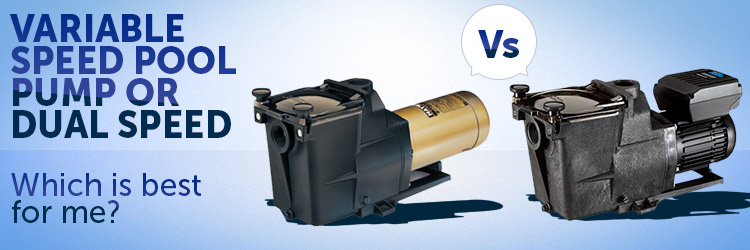
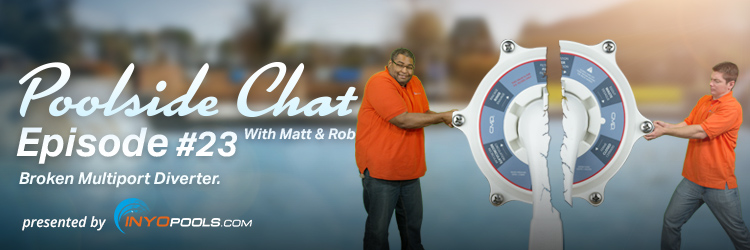
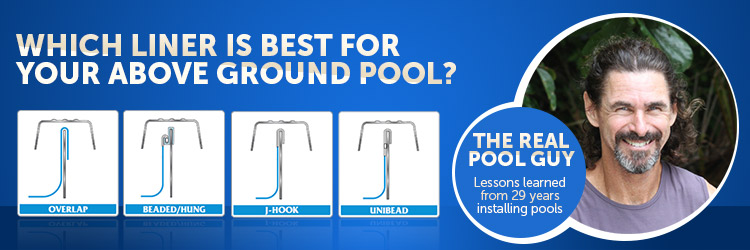
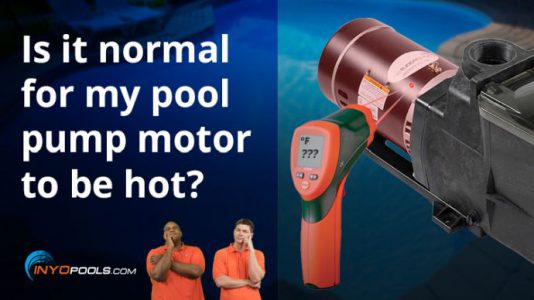
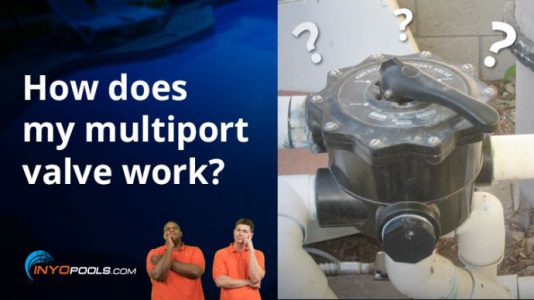






I have Jandy Stealth JHP1.5 hp single speed pump. Would like to just replace the motor with a 2 speed for energy savings. Current motor is a AO Smith 7-164304-24 CAT B129. I control the pump times with a Aquilink RS4 thats about 9 years old. What 2 speed motor do you recommend and can the RS4 control switch the speeds? Or do I have to use a manual toggle? Thanks
The dual speed replacement motor would be the STS1152R. The RS4 should be able to control this motor.
If you go dual speed then you will need to upgrade your relay in your Aqua Link from the standard pump relay to a Dual Speed Pump AquaLink Relay.
I have a 10-12,000 “unsure” gallon pool in which the previous owner had Hayward SP3400VSP. The pump seems to have died (flips the breakers when started. Now I must choose Pentair VS or dual for the florida climate. I have been told by two companies, its overkill for the pool size to go single speed. However, energy cost is high concern. Your thoughts or recommendations? no features or spa exist, just a salt system.
Now that Variable speed motors have been out for awhile, prices are starting to come down. if you want to stick with a variable speed, but not pay out the nose for it, go with a Pureline Prime. It costs just a little more than a single speed pump but the motor is a quality Century-AO Smith brand.
Hello, purchasing a home with a 16 x 32 ft pool. It currently has a 1 Hp super pump and is kept opened year round with the pump running 24/7.
I’m planning on converting to a salt water system and am debating between switching to a variable speed Pentair at the same time.
The other debate is if I keep the pool open all year or spend additional money on a solid cover. The town has an average electricity cost of 11.4 cents and the average yearly temp is 60 degrees.
Any thoughts on closing vs not closing in addition to a recommendation on switching to a variable?
Thanks
It would help to know where you are in the country, also if you plan on swimming.
If you don’t plan on swimming and do not want to be concerned with the pool maintenance (though it would be minimal in winter) then I would close it. It really is personal preference, either way.
I have 3 pumps for my system. 1 for the filter, 1 for the floor system and one for the water fall. Is 1 vari-speed enough to handle all this or should I get dual speed or stick with what I have?
This all depends on the water flow demands of your system. If your combined water flow needs are 150 gallons then a variable speed is not going to be your choice. Plus if you get one variable speed pump, you will need to replumb your system to divert your water flow from the old pumps to the new single pump. The situation does not seem feasible.
You can try a dual or variable speed as a replacement for the main pump since that is likely the biggest consumer of electricity. The other two are better left to single speed, because the waterfall and in-floor cleaner require a constant rate of flow.
The SP32102EE is the pump that could push the most water, so I would go with that one.
Putting in a new pool,18,000gal. Thinking about a D E 4820 filter with 1HP sp32102EE dual in ground pump OR would it be better to use sp2607x102s dual in ground pump? With that I would use 2″ pipe. Maybe you could recommend anything that would work better,also wanting a heat pump???
I have a 13,000 gal pool in Phoenix and had a new variable speed pool pump installed last year.
I would like to turn the heater on to bring up the temp to 82o. Do I have to run the pump on high speed during heating cycle?
What is the most economical settings for heating the pool so I can swim in the afternoon.
Heaters have a minimum flow rate requirement, that varies on the model. If your flowrate is below the set requirement, your heat pump will not turn on. For single and dual speed pumps, flow rates vary depending on pump model, hp, and feet of head you would need to use your pump model’s pump curve to get the answer.
Because it is a variable speed you can find out pretty easily by gradually easing up the speed to find the flow threshold.
Another thing to consider… to be on the safe side I would suggest running the variable speed pump a little higher when heating (even higher than the minimum flow set by the heater mfg.). I personally was running my variable speed pump too slow when heating my pool and the slow movement of the hot water melted the headers going in and out of the heater (to the tune of $800). This occurred even though the water was going fast enough to trip the flow switch in the heater. Just a cautionary tale =)
Yeah, those fancy variable-speed pumps look great on paper, then you get hit by an electrical storm and the thing fries to the tune of $500 to replace the keypad and “brain.” Coincidentally, that’s about the price of an entire well-made two-speed pump.
In most areas of the country, a lightning strike is not too common. Down here in Florida, we have to worry about that more than most other places. You can install a surge protector to protect your pool equipment from such instances e.g., Pool Equipment Surge Protector 120V / 240V – PS3000.Also, install a bonding wire, which can help with stray electricity as well. Coincidentally, both of those combined are significantly less than dual speed pump.
We have a large pool (40,000 gallons) in Ohio and our 1 1/2 HP Hayward pump stopped working at the end of the summer but we were able to squeak through shutting it down for the winter. We were looking at what to replace it with this Spring and were thinking that moving to a 2HP 2 speed pump would help with energy cost and pool clarity. It’s an older pool (30 years) and since we moved in 3 years ago, we’ve struggled with it but are making progress. I don’t want to make the mistake of replacing the pump with something that doesn’t do what we were thinking it would. Thanks
What size lines do you have, 1-1/2″ or 2″? Also, do you know the feet of head of the plumbing, before the pump?
2″ lines. I do not know about the other.
The size of your filter is another factor that can limit your HP options. With 2″ pipes, your system should be able to handle any pump you put on the system. But it is a matter of whether your filter can handle your pump’s output. Even though you will likely be running the pump on low speed, you will have occasions where high speed is necessary, this makes the filter’s capacity important.
To figure out your pump’s flowrate, you need the pump model and HP (we got that) and the feet of head. The feet of head is a measure of how far the pump has to pull the water. The higher the feet of head rating, the lower the water flow. For a guide on how to measure this, read this guide How Do I Calculate Feet of Head for My Pool?
First of all, thanks so much for all of your expertise! Our filter is the Hayward Pro series S270T and the flow rate listed on the side of it for filtration and backwash is 74 GPM. As far as the feet of head, I will gather that data based on the informative link that you gave me or maybe I have that in the original pool paperwork somewhere. The pump that I was considering was the Hayward Super Pump 2HP but I was leaning towards the 2 speed.
From what I understand with variable speed, the approach is to turn over the pool water as slowly as possible, meaning running the pump for 8 hours or maybe more. I’m considering taking the opposite approach. To take advantage of power provided by photovoltaic solar panel, I’d want to try to turn over the pool by running an oversized HP pump during peak solar hours, say 10-3, so only 5 hours or so. Would variable speed provide any benefits under these circumstances? Located in warm climate & expensive energy.
If you’re only running the pump 5 hours a day and only on high speed, it does not seem worthwhile to install a variable speed pump. Save the money and get a single speed pump.
OK, so here’s where i am confused. All the literature and ads for variable speed pumps seem to state that the energy savings come from the ability to program the pump speed to an “optimum” value. But what I can’t find is how one determines what that optimum speed is. It would seem to me that a variable speed pump programmed to the wrong speed(s) is no better than an old fashioned single or two speed pump. So what gives? is there a magic formula or what?
Optimal speed is finding the sweet spot where you are running your motor on the lowest settings to maintain your’s pool normal water quality. If you look up the Law of Affinity, it essentially states, RPMs and amp use are not comparable. A motor running at 3450 RPM may run at 15 amps, but when you cut the motor to half speed at 1725 RPMs the motor will only be using 2-3 amps, not 7.5. The point of the variable speed is to give the user a better way to throttle the motor, allowing for maximum savings. A variable speed are rarely set to 3450 RPMs because it negates the point variable speed drive.
Variable speed is by no means a plug and play motor if you want to peak savings. There will be a feeling out period where you run the pump at an RPM setting for a few days, check the water chemistry to make sure everything is still in check. If the levels check out, then you can take another step down, and keep doing so. When you reach an RPM that causes the water chemistry to take a nosedive, you can attempt the same RPMs with a longer run time or go to the previous steps RPM.
There is no magical formula because every pool is different after you factor variables like pool size, feet of head, and chlorine demand, and bather load. you will also see savings over the life of the motor, because variables speeds could last 10-15 years whereas the new single and dual speeds motors only last 3-5 years.
Hi,
I need your opinion on a really important issue I am having with my next door neighbor’s pool system. I hear a low frequency humming in my home 24/7 so I hired an acoustical engineer who determined it was potentially my neighbors pool pump system. We cannot confirm since they are not willing to work with me. All I know is something is running 24/7 over there and the problem began when it was installed. They told me it was a very expensive system and they will not even turn it off long enough for me to determine if it is the source. The pump runs all winter with a tarp and potentially a heater (I’m located in PA). I notice it gets louder in my home around 10 pm to 10am, so I thought it might be on a timer. That’s how I found this blog. Can someone please tell me if a pool pump/filter system can cause low frequency humming in my home. I really appreciate any help you can provide.
Too bad your neighbor will not help you figure out the issue. I could not tell you one way or the other if it is the pool pump causing the hum in your house. A pump motor with bad bearings creates a noise that would drive anyone batty. A loud hum could be a bad capacitor issue. But again, this is not really a pool question, so I am out of my depth.
You might want to try TroubleFreePool.com; they seem to answer a bunch of out-of-the-ordinary questions.
Most definitely yes. Particularly with these more expensive, superficially “quiet” variable speed pool pumps like the pentair models. You will hear a low frequency that transmits through the ground and through the foundation.
If they don’t have the pump on a rubber mat, it needs to have a rubber mat installed to isolate the vibration and to dissipate the energy before it’s transferred into the ground.
Hi there
I live in Northern Calif. and have a single speed motor on a 25k gallon older pool with 1 1/2 inch pipe. I run it from April thru October. Wondering if a variable speed is right for me.
Thanks
As Patrick covers in the blog, it depends on utility company rebates, electricity costs and the demands of your system. The first thing is, the 25k gallon an accurate assessment of your pool size or is it a guesstimate? Then, we have to figure out the feet of head of your pool to determine what flowrates you can get with the smaller 1-1/2″ pipe. Read this article on how to calculate feet of head. Utility companies also have a rebate section on their website to help you determine if the pump you’re interested in is acceptable. If their website is not helpful, give them a call.
Ok thanks Matthew
I have a buddy who has a brand new Jandy VSFHP165JEP 1.65 HP variable that he will sell me for $400 ( he paid $900)……. Figured my single speed is getting old and it might makes sense at that price and with really high elec rates here in Northern California…… thanks again and I wll check with the energy company about a rebate….
Cory
I live in Las Vegas. 37000 gallon pool. 2 inch line. Salt system with a triton 2 sand filter. I am looking options for a variable speed pump. What is recommended.
Also have a gold line aqua-logic control for the system. Thanks for any help.
If you want a variable speed pump that interfaces with your salt system then I suggest the Hayward Eco-Star 2.7 HP or the PureLine Prime 2.7 HP. The Pureline is a fraction of the cost of the Hayward, while having similar flow rates.
I live in Vero Beach Fl with an older 10,000 gal pool. I am adding solar panels on the roof, and I want to replace the old Jacuzzi pump. I hope to use the pool year around once the solar panels are installed. What pump would you recommend?
I suggest using a variable speed pump, because it gives you so water flow flexibility. A variable speed can be run on lower revs for normal filtering and when you activate the solar panels you can up the flowrate. Variable speed motors are also more durable than the induction style single and two-speed motors.
The two variable pumps I prefer are the Pentair IntelliFlo and the PureLine Prime 2.7 HP
I live in Houston Texas and my pump just went out on me; My pool size is only 11,000 gals; The energy cost here is approx. 9-10 cents per kilowatt. can you advise me on whether to go with a variable or dual speed pump; Also which model and brand; Also can you advise me on how do I find out if there are any rebates from our local electricity company. thanks!
Michael, the article covers the calculation you need do pretty thoroughly; they involve daily run times, length of pool season, flow rates, and of course electrical cost. And it also has a summation at the end:
Warm climate & expensive energy – Variable speed pump
Warm climate & cheap energy – Dual speed pump
Cool climate & expensive energy – Variable speed pump
Cool climate & cheap energy – Dual speed pump
But if you want a recommendation for a pump, you could not go wrong with the Pentair Intelliflo or the Pureline Prime VS
Also, rebates are dependent upon your electric company. You will need to call or visit the electric company’s website for details.
Why do you not like the Hayward variable speed pump?
I just purchased a brand-new Centry 21 single speed 1 1/2 hp pool pump from you. Is still in the box. I’m interested in a variable speed pool pump. Is there anything that you can do to help me out in exchanging the single speed for the variable speed
John – call our customer support line (877-372-6038) and a rep can help you out.
Hello, thanks for this article. We have a one speed pump, fro a 15,000 gallon pool. We just moved in, so we’re trying to figure out whether a variable speed pump might be a good switch for us. Any input? We live in Southern California and so will be running the pump all year round. If yes, any input on brand? Thanks for your help!
Sarah – a variable speed would be a great option for the Southern California area because of California’s high energy costs and energy rebates.
Because California is so energy conscious, power companies will offer rebates to homeowners installing variable speed pumps to offset the higher cost of the pump. These rebates can reduce the cost of a variable speed pump down to the cost of a single speed pump. Then you add the operating cost savings of a variable speed. Eventually, it pays for itself.
If you plan on replacing the whole pump, I suggest the Pentair IntelliFlo. But if you just want to replace the motor, I suggest the Century V-Green, Part One & Two.
Hi Matthew. I live in Arizona. I have a 35k gallon pool with a large Water fall feature. Currently have two pumps…one for the pool and 2 hp for the water fall. I just purchased the Pentair Intellflo for the pool. Can I use the new Pentair intelliflo for the pool and the water fall?
You can definitely use it for the pool, but I have doubts trying to use one pump for both. Those two pumps can probably put out a good bit more water than even the Intelliflo. Plus the replumbing necessary to make it all work would probably be extensive.
I would add the Intelliflo to the pool but keep your waterfall pump.
I have a variable speed that I paid $1,200 for it last me two years now it’s completely dead, do your research before you buy it.
Do you have an idea about why it died?
Hi Mathew.
We plan to buy a home in Riverside California.The house has a pool and the pump is 15 years old.We are not sure if we need to change the pump.I understand that we need to run the pool pump 365 days.The is also a spa.
If I buy a new variable pump does it include the motor as well.If not would I have to buy a new motor as well.How much would it cost to change the motor and the pump.Which model would you suggest?
Here is our varaible speed pump section, the motor is included with the housing.
The crowd favorites seem to be the Pureline Prime VS and the Pentair IntelliFlo
I have an older pool (40 years) that needs a new pump. I am trying to decide whether to get a dual speed pump, or a variable speed. I live in Wisconsin, so only use the pool about 3 months out of the year. I am also planning to move within the next year. Would it be worth it for me to put in a variable speed pump???
For your situation, it would not make much sense to invest the money into a variable speed pump. I would go with the dual speed pump.
There is no need to throw money into a pool pump you will be unloading in a year.
Why throw the money into a dual speed pump? If you will only be using the pump for 3 months and then selling, it makes no sense to put money into it. Just go with a single-speed pump.
The three choices above are for the main pool pump (not the water features)!
I am building a pool and we do have a spa, water features, bubblers but the water features bubblers will be on a smaller single speed pump with pool spa on the higher speed pump. I’m in Dallas area where folks run pool all year. My builder is giving me choice of the following (all Hayward)
Single speed – SP3220EE 2 HP Tristar
Dual speed – a Hayward also but they did it specify which one
Variable speed- ecostar SP3400VSP 3Hp
Help? Our pool will be around 17,000 gallons
Thanks!
My preference would be the Variable speed option, but I would switch out the EcoStar for a Pentair Intelliflo. I have taken too many calls concerning the EcoStar’s finicky controller, plus the IntelliFlo is less expensive in most places.
Angonizing decision. This excellent article takes the argument of why one should not go for variable speed pump. Difficult decision when energy savings would not be fully in older pools with intake pipe of 1.5 inches. I realize I am not going to use just $10 worth of electricityper month but 50% would be helpful. I have single speed motor that I am advised costs $100 per month. Thank you very much for this informative article.
again a variable speed pump can be dialed in for your pipe dia.. therefore at a lower speed comes savings that far outreach initial cost of pump. Most utilities have a higher rate also for max amount of amp spike. ex. if your pool pump starts up the same time you start up your dish washer, or cloths dryer. A single speed pump last about 7 years whereby a vfd pump will last over 10 years.
10 years lol
Just replaced single speed pump motor with dual speed motor. Not much difference in noise as both seem fairly quiet. Although properly grounded…..A close proximity lightning strike took it out.
Motor was 14 years old and set to run 7 nights a week from midnight to 4 AM. Also runs when using pool and during maintenance.
If you have no air leaks in the piping then the difference in pressure is only the difference between the input and exit. If the two ends stay below water level then there should be very little pressure except for the initial pump up to the highest level. In my opinion;}
Mike, there are frictional losses due to the piping and fittings. You also lose a lot of pressure across the filter element. Depending on your set-up, these can be quite large.
I am in the process of swapping out a single speed motor for a variable speed motor. I am in California. Do I need to have a timer on a 2-speed motor according to CA law?
Brian, that s something you will want to check on with your local home inspector or whomever enforces the codes in your area. Codes vary a lot from area to area so it best to speak with a local technician or inspector for a current/up-to-date answer.
It is my understanding regarding solar heating, that once the water starts back down from the roof, a siphon effect takes over and the power needed to lift the water is greatly reduced. Run the VS pump on a prine cycle for five minutes, long enough to establish the solar system, and then back it off to a more economical flow.
I originally thought you were right. After a few repairs on my roof, I found avacuum valve. This allows the water to drain from the panels. So I believe the pull of siphon is cancelled by this vacuum valve. I installed a flow meter on my 3hp system with solar on the second floor roof. 85-90gpm without solar, 65-60 gpm with solar.
While I agree with you the variable speed pump is generally the way to go, much of the $ savings is lost if you have solar panels to heat the pool. The more water going through the panels the more heat they make. You can’t run the pump at slow speed and still pump water to the roof.
The variable speed pump is annoying in how easily it shuts off. Turn on\off the pool vacuum and the pump shuts off. It’s also (I feel) excessively hard to program or change the run time on. Zero usability work went into the on-pump menu for it.
Michael, very nice post. I agree with the trouble of having a solar system on any pool; the necessary power to reach the panels almost offsets the savings of a variable speed pump. The key is dialing in a pool temperature or heating schedule that optimizes the heating capability of the solar panels. For example running it only at the hottest times of the day or lowering the temp that activates the solar panel heating system. Are you sure you need the full strength of the pump to read the panels or can the RPMs be dialed back to save money?
As for the pump scheduling, the few pump scheduling programs I have seen have been relatively simple. What is the make and model of your pump? Maybe we can figure out what the issue may be.
I have an older pool with 1.5 inch pipes. I live in Florida and also recently bought a heat pump for the pool to extend my pool life. My pool originally only had one inlet. I added two more and just resurfaced it. Now I need a new pump. I know it can only take a 1.5 hp pump. I have heard about how much savings a variable speed pump. Will a variable speed pump work on my pool. It is a 23,000 gal pool.
Yes, a variable speed pump would work for your application. Variable speed pumps should work for most pool applications.
A good candidate for your replacement pump is the PureLine Prime Variable Speed Pool Pump 1.65 HP – PL2605
Great article. I read many posts and didn’t see this question. We are looking to replace our single speed, 2hp, 56 gpm flow rate with the pure line 2hp or 2.7 hp 110gpm. We have a waterfall from the spa to pool. We have a second pump for the spa. Is the hp more or less important than the gpm? We don’t want the extra cost of the 2.7, but want to be sure the pool gets really clean.
We are in the Palm Springs cCalif area with high temps – 105-120+ for 3 months. We have a copper silver ionizer for 9-10 yrs working great , but it can’t keep up with the algae in the summer, so we are using a lot of ch.orine. Want to go with UV also Delta or spectralight are our top choices. You don’t sell them?? Any help on pump or UV? We had salt and don’t want to go back. Thank you,,